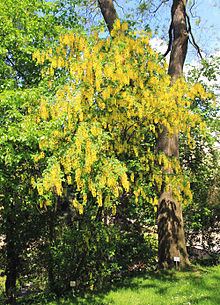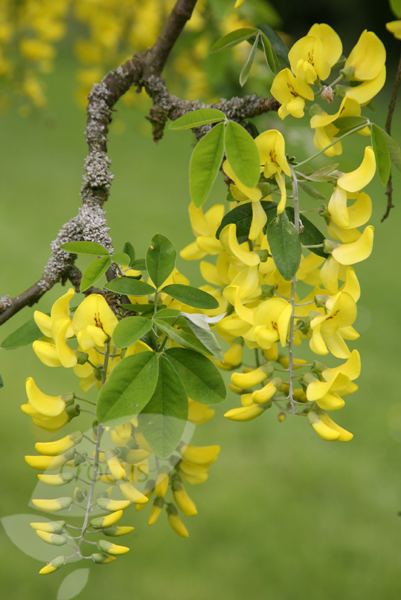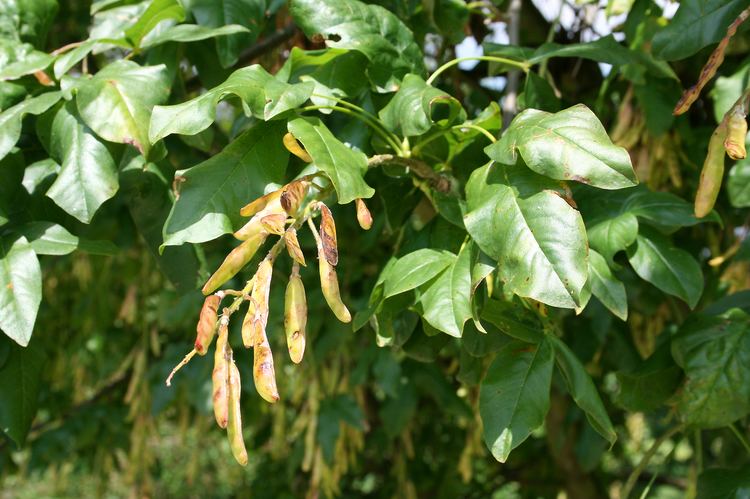Tribe Genisteae Scientific name Laburnum alpinum Rank Species | Genus Laburnum Higher classification Golden chain tree | |
 | ||
Similar Golden chain tree, Laburnum anagyroides, Legumes, Cytisus, +Laburnocytisus adamii | ||
Laburnum alpinum maggiociondolo
Laburnum alpinum, the Scotch laburnum, Scottish laburnum or alpine laburnum, is a leguminous, (Leguminosae), deciduous tree.
Contents
Description

Laburnum alpinum is similar to Laburnum anagyroides, it grows to 5 metres (16 ft) by 6 metres (20 ft), at a fast rate. It is hardy to zone 5.

It is in flower from May to June, and the seeds ripen from September to October. The panicles of vanilla scented, pea-like flowers are hermaphrodite (having both male and female organs) and are pollinated by insects.
The fruit is a pod or legume, the seeds green at first but becoming shiny black.

The leaves are cholagogue and purgative. All parts of this plant are highly poisonous and should not be eaten or used internally.
Distribution

It is native to Central and Southern Europe and has naturalized in Scotland. L. alpinium and L. anagyroides Medic. both are common as a garden escape in Northern Ireland.
Cultivation
Laburnum alpinum is cultivated as an ornamental tree. Plants can be successfully transplanted even when quite large. The most common ornamental Laburnum plant is a hybrid of this species and Laburnum anagyroides, Laburnum × watereri.
The plant prefers well-drained, light (sandy), medium (loamy) soil but tolerates heavy clay and nutritionally poor soils. Preferring acid, neutral and basic (alkaline) soils, it can grow in semi-shade (light woodland) or full sun.
It can withstand strong winds but not maritime exposure and tolerates atmospheric pollution. The plant is notably susceptible to honey fungus.
Laburnum has a symbiotic relationship with certain soil bacteria, these bacteria form nodules on the roots and fix atmospheric nitrogen. Some of this nitrogen is utilized by the growing plant but some can also be used by other plants growing nearby.
